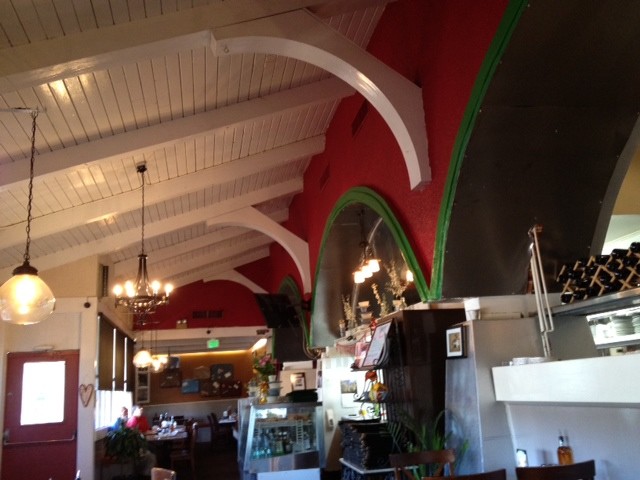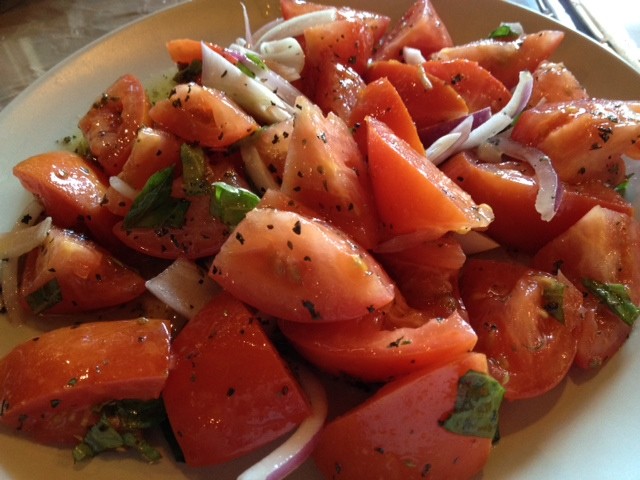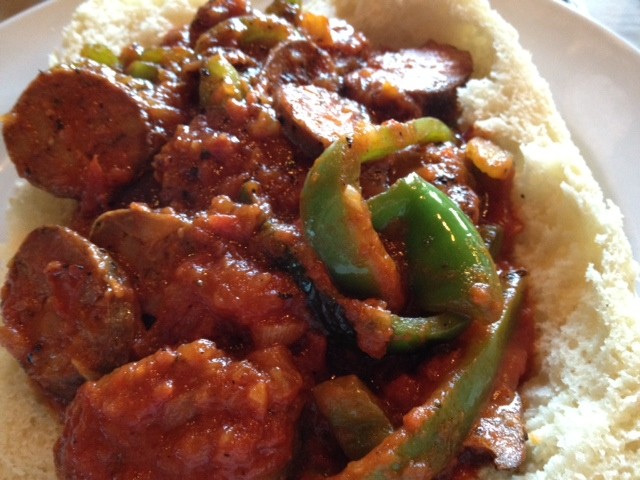
It's been about four months since Edwin reviewed the Ramsay-revamped Luigi's D'Italia in Anaheim and three months since the show aired on FOX. Gustavo went for the taping of the show itself; I went the following week, to see what they'd done to a restaurant that inspired one of two reactions in the locals: fierce loyalty, or a jaw-splitting yawn.
]
The restaurant, as seen on Kitchen Nightmares and as edited by post-production staff with an eye for drama, was in deep merda; losing money hand over fist, the kitchen staff acting like stronzi and screaming at each other, and generally scaring the customers away. My own relatives refused to go back after a particularly bad bout of peremptory service described as “bizarre” by one member of my family. I only went for pizza (which I love) to go.

Why the drama? Where I grew up, the only explanation needed would be that the Catizone family, who own and run Luigi's D'Italia, are Calabrese. Whether it's true or not,
the Italian (and Italian-American) stereotype of people from Calabria–the toe of the boot–is
that they're as hot and spicy as their cooking.
When the show left off, the staff had made an uneasy peace with each other. By the time Edwin published his review, they'd bowed to the pressure of the angry old-school crowds who missed the goopy, cream-laden stuff they used to serve and were serving both Ramsay's updated, too-fancy-for-the-burbs menu and the old menu.
Well, they appear to have struck a compromise; there's only one menu now, that incorporates a few of Ramsay's dishes and many of the old dishes. (Incidentally, the menu on their website is the old Ramsay menu, not the current offering.)
Happily, though, there's a new sense of Calabrese pride in some of the dishes, something that could only have come from the Catizones; Ramsay was too busy trying to turn the restaurant into a carbon copy of every other Cal-Italian restaurant in the Los Angeles area, with bizarre intrusions from other Italian traditions (polenta?).
Calabrese cuisine is unapologetically spicy and seemingly uses more red chile flakes than a chili cook-off in Texas. It's a cuisine of foods that can be brought forth from a parched, sun-baked land; tomatoes, peppers, eggplants, olives, chickpeas, pork, lamb, fish, strong herbs, and above all, olive oil.
They've fixed the bread. When they first re-opened, the bread was stale and disgusting; the bread we got on the last visit was fresh, and there were bottles of chile-infused olive oil for dipping. All that was needed was a little tangy ricotta salata or even some feta for saltiness.

Much was made of the homemade sausage on the show–it was the catalyst for the great make-up scene–and here it is displayed as only Southern Italy could do it. Gone are the Ramsey-fied cannellini beans; the sausage is sliced and simmered in a spicy tomato sauce with peppers and served in pitta–in a crusty roll that's sliced open. While I'd have preferred a whole sausage to slices, the fact is it's pretty good sausage, and a hearty meal.
The Italian-American side of things is well represented; there are plenty of cold cut sandwiches at lunch time (incidentally, people of Orange County, please stop saying “gabagool”–you can't pull it off, and we all know you heard it on The Sopranos), and the usual chicken and eggplant parmigiana. There are also cannoli shells in the display case as you walk in–and they're good cannoli.
Cheese tortellini with chicken, though, hearkened back to the old days of glop. There must be a call for this, or it wouldn't have come back, but it seemed heavy, beige and wrong next to the other dishes.
The pizza is the same as it ever was–a thin, bubbly, gluteny, chewy, slightly charred crust with a good balance of sauce, cheese and toppings, and most importantly, foldable slices. I think if Ramsay had monkeyed with the pizza recipe, there'd have been outright revolt amongst the Anaheimers.
Service, incidentally, is a lot warmer and friendlier than it used to be. It still hits some clunks–these are not front-of-house lifers we're talking about here, and so the waits can be long, but there's no more of the creepy staring around corners or standing just off the table. There were genuine smiles and a real interest in our dining welfare, a welcome change.
It'd be nice to see more of an emphasis on the Calabrese foods: bucatini with anchovies and olives, stewed pork with roasted potatoes, or dishes featuring the sausage spread known as 'nduja. It's a perfect fit for Anaheim, whose large Latino population is no stranger to capsaicin, and a great differentiator; I don't know of a single Calabrese regional Italian restaurant in Southern California. Meanwhile, put on some Mimmo Cavallaro and enjoy what is available.
Follow Stick a Fork In It on Twitter @ocweeklyfood or on Facebook!

